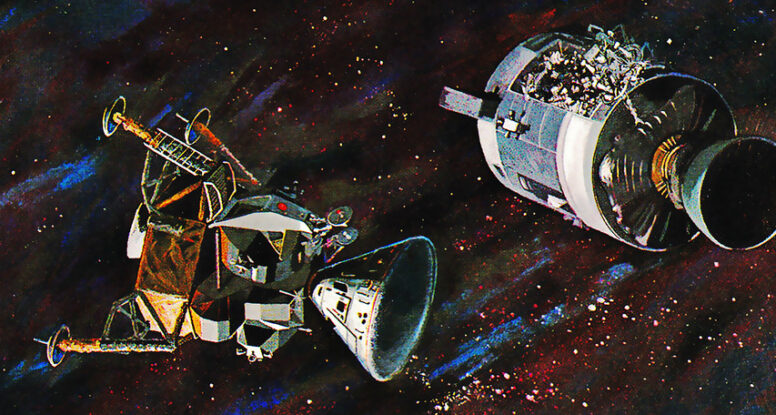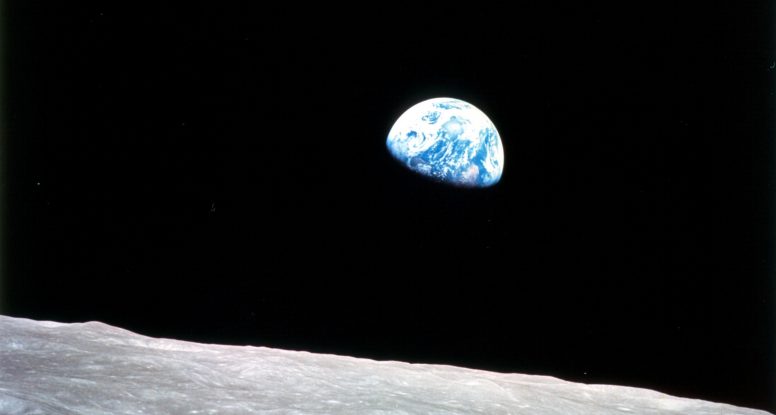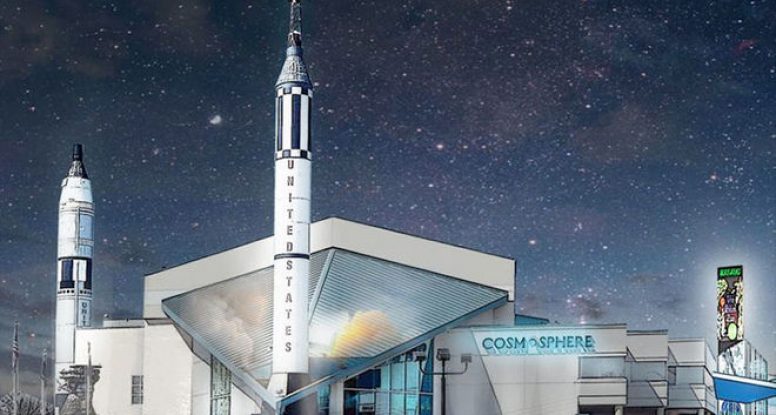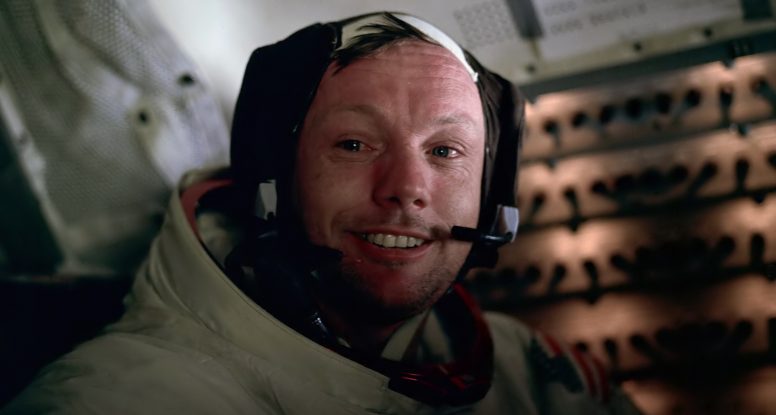An Internet denizen asked whether there is any “real evidence” that the moon landings were faked. There isn’t, of course, but the blathering of those who think otherwise provides ample evidence for an alarming level of popular ignorance. To wit, some other “answers” to this question, properly addressed:
I spent Memorial Day weekend in Los Angeles attending the International Space Development Conference and walking, walking, walking…. I was recognized for my Jim Baen Short Story Award placement along with first place winner Stephen Lawson, met renowned scientists Freeman Dyson and Frank Drake (of Dyson sphere and Drake Equation fame), and met actor-cum-space entrepreneur Harry Hamlin and philanthropist and space promoter Rod Roddenberry.
With the launch of the Falcon Heavy, Space-x has demonstrated a booster half as powerful as the mighty Saturn V and three times as powerful as the next largest launch vehicle flying today:

With the promise of extensive reusability and rapid turnaround times, Space-X seems poised to re-write the economic rules of spaceflight. Are we finally going to see hotels in orbit and colonies on the moon? Well…maybe. Right now, it’s hard to see how anyone is going to compete, not the United Launch Alliance behind the Delta IV Heavy, not the Russians, not Blue Origin, and not NASA. But expect all that to change.
Hat’s off to Space-X and Elon Musk for the sort of innovation that’s been missing from launch vehicle design since the days of Werner Von Braun and Sergei Korolev. Grid fins and engine design ideas from the Russians contribute to performance and reusability. Use of kerosene (out of fashion since the Apollo days) allows for a smaller rocket, which is therefore lighter and more efficient than hydrogen fueled rockets (like the Shuttle and Delta V) even through hydrogen carried more energy per unit mass. Pre-chilling the fuel (not possible with hydrogen) makes the Falcon even more volume efficient. The result is that the Falcon 9 heavy can launch three times the payload of the Delta V Heavy, even through the falcon is slightly smaller and largely reusable.
This last point cannot be overestimated. Elon Musk has paid attention to something most of the rest of the industry has gotten wrong for decades: The goal in launch vehicle design is cutting the cost per pound to orbit. Specific impulse doesn’t matter. Energy content per pound of fuel doesn’t matter. Reusability, by itself, doesn’t matter. All the matter is, how much does it cost to get a pound into orbit.
The Space Shuttle tries to cut costs through reuse, but created a launch system so complex, it cost more to operate than contemporary expendables (like the Delta IV Heavy). Space-X instead, looked at the math in economic terms. It is amazing that in so doing, they’ve created a launch vehicle that is far more economical than any alternative, even though it has to hold back some of its fuel for the ride home.
Kudos. Mr. Musk. He also understands that rockets become more economical the larger they are. I don’t know if his “BFR” is going to carry colonists to Mars, but one thing I do know. There has been a sea change in space flight, and every player must now keep up or get out of the game. The result, likely, will be honeymoons in orbit sooner than you might think.
There’s a scene in Ron Howard’s wonderful film, Apollo 13, when the crew is preparing to fire the LEM engine in space and Commander Lovell is Seen ensuring that his socked feet are firmly attached to the velco floor. That might well be authentic, but it leaves audiences with a mistaken notion of when flying the LEM was like during a landing.
Landings were dangerous because there was a big moon outside, just waiting to smash into you. The LEM had to maneuver, and the crew could be tossed around as it did so, just as they needed precision control. If something went wrong (as it did in Apollo 10) such an upset could elevate a minor problem into a crisis, but even under the best of circumstances, landings could be hard, and the last thing you wanted was for a suited astronaut to bang to into a bulkhead, breaking the suit or the LEM.
NASA needed a way to hold the astronauts down so they could focus on their jobs while giving them the mobility needed to move about the cabin as needed. It had to be light, it had to be reliable, and it had to be dead simple. Their solution? The Apollo LEM Crew Restraint System:


I often see people asking the question, why haven’t we gone back to the moon, sometimes accusingly, as if that somehow implies we never went at all. We went, and we’ve sought in the decades since never to engage in such a race again, largely because those in the position to fund such a race have seen the bill for the last one.
During the 1960’s the space program consumed 5% of the federal budget—competing with the expensive cancer of war in southeast Asia. It needn’t have been so, but the race to beat the USSR gave the moonshot the character of a wartime weapons procurement program—sufficient to do the job, but damn the expense. That was sort of the point. It gave the electorate new heroes to rally around and helped transition America’s post war industrial economy into a technological powerhouse. It also taught us how hard space flight really is—especially manned spaceflight—and in our national exuberance, made it seem even more expensive than it needed to be. We built the space flight equivalent of the SR-71 spy plane (mission capable, but expensive and custom made) where we needed a DC3 (mass produced but adaptable) and only knew how to actually build the Wright Flyer. Congress didn’t quite appreciate how much we were biting off.
The program did what it was hoped it would. Even as a controversial war and deteriorating race relations pulled America apart, Apollo bound us together, not just with each other, but with everyone else on the planet. One could arg
ue that this alone was worth the price of the program, but we did get a bit carried away. NASA had designed Apollo to meet Kennedy’s mandate, but they spent money on studies of follow on lunar bases, space stations, LEM-derived space freighters, and upgrades to Saturn that from an economic perspective, made as much sen
se as a fleet of disposable battleships. Meanwhile, the Space Nuclear Propulsion Office had developed and tested an atomic thermal rocket and was advocating to have it developed into an atomic third stage for the Saturn, to send man to Mars in the 1970’s.
Having seen the ballooning costs so far, Congress was horrified. We had already “won” as far as they were concerned, having gotten to the moon and back, and now we risks snatching defeat from the jaws of victory. Everything else (including the science) was just more dollars and danger. This, I believe, left congress with a “bad aftertaste” that lasted well into the 1990s. Sure, they thought, NASA can do great things, but who can afford them? NASA negotiated a compromise. They traded their grandiose dreams for Skylab and the Shuttle, with the hopes that this would lead to and justify a later station, and from there…
In hindsight, it’s hard to see how NASA planners, faces with dwindling interest and funding in the 1960s, thought anything they could achieve in low Earth orbit would restore the interest and the funding of their gravy days in the lead up to Apollo 11. In retrospect, they might have done better to set themselves a vision much more humble, but in its own way just as lofty, as the moonshot: developing economical space flight technology. Alas, they were given what they asked for—the shuttle—morphed by committee into a sort of Swiss-Army Knife relaunchable space station that ultimately may have done as much to reinforce our national sense of sticker shock as to advance the final frontier.
So when subsequent presidents have sought to challenge NASA with bold new missions…the funding has never materialized. Partly that’s lack of political commitment. Partly, though, it’s because LBJ is gone. Kennedy proposed the moon landing, and ultimately Kennedy is the one who initiated international cooperation in space, but more than anyone else, Lyndon B. Johnson championed the moon landings. According to NASA insiders, it was LBJ who, when Kennedy was fishing for a win in space, told Kennedy to send a memo officially asking him—as vice president—for ideas. It was in response that he (LBJ) suggested the moon landing. And after Kennedy consulted with the experts, it was LBJ who strong-armed congress into writing the checks. It was said of LBJ, “Nobody wanted to say no to LBJ. He knew everyone on the hill, and he knew where all the bodies were buried.”
The Cold War was over, and we both won and lost. We won by using the power of capitalism to spend the hard line communists controlling the USSR under the table in history’s greatest economic drinking competition. We lost by failing utterly to help Russian moderates—who had known this was inevitable for decades—to transition their country into a strong, stable, nation with the same incentives to innovation, but also the same controls against corruption and excess we had come by through hard knocks.
The moon landings were arguably the greatest thing ever done for the wrong reasons. We, as a nation, did it right, even carrying along rovers and a geologist. Sure, Congress wanted to put a thumb in the eye of the Kremlin, but America, from Kennedy down to the people, saw that for the first time since humans first walked out under that glowing thing in the sky, we could dare to go there. So we did. That was the good part. The moon landings not only inspired the generations who participated, but every generation since. They also paid dividends that are far less visible but far more important than the oft-touted spin-offs like CFL lighting and the acceleration of microcomputer research.
The Apollo program required “rocket science” of over 1,500 companies throughout the US economy, from brassiere makers to foundries. The high-tolerance, high reliability engineering and manufacturing controls developed for and disseminated by the space program now inform all of manufacturing, from flat-pack furniture that goes together the first time and every time, to cars that don’t rattle and that can drive 150,000 miles without a tuneup, to pocket computers 10,000 times more powerful than those that went to the moon. The race was the bad part. It made everything far more expensive than it might have been. But…maybe that’s the way it had to be. Something else the space race did was illustrate with crystal clarity how, despite the creative capacity unleashed by free enterprise, despite the inefficiencies often inherent in centralized control, sometimes greatness requires both. At the moment, NASA seems to get that, and is embracing its role as a foil and champion of commercial innovators, even while working on the next great booster—beyond the reach of commercial interests.
The last thing we need is another space race. Let’s take our time. And this time, when we get there, when we press human feet against another world, let us stay.
So, we’ve seen all the pix from Finland, where this year’s World Science Fiction Convention was held, but how many there, gathered to celebrate all that is scifi and fantasy with shiny new rocket ship Hugo trophies, that byinternational law, Finland is forbidden to go to launch such a rocket?
Title IV, Article 23 of the Treaty of Paris specifies that “Finland will neither make, manufacture, nor field aircraft designed to operate with a normal range in excess of 5,000 kilometers, nor shall it assign or second its personnel to aircraft so designed.”
This provision is designed to restrain Finland from operating long-range bombers, but it also restrains it from sending Finns to the Moon since the Moon is more than 5,000 km away and requires air transport to get there.
Finland will not violate the Treaty of Paris. The Russian Federation, as successor state to the Soviet Union, is legally permitted to enforce Finland’s treaty obligations through force of arms, and Finland takes these obligations seriously. So, no moon shot for the Finns.
Of course, individual Finns might travel to the Moon in the same way that individual Finns can fly on long-range commercial aircraft. However, “Finland” -as a state – cannot sent a craft to the moon through any means currently known to science.
Although….the atmosphere is arguably less than 5,000 km deep–what if they went straight up?
Speed and trajectory.
It is a common misapprehension that all radiation is some sort of magic death ray. It isn’t. Type, dose, and duration of radiation make all the difference. We evolved on a radioactive planet. Sunlight is a type of radiation. Nuclear radiation can kill–or be stopped by our outer layer of dead skin cell. Even our bones are weakly radioactive, and we evolved to handle the gamma rays they produce within our bodies just fine.
Long before Apollo, NASA launched a fleet of probes to map and characterize the Van Allen belts. The belts primarily consist of an inner band of energetic protons and an outer band of electrons, all trapped from the solar wind by the Earth’s magnetic field.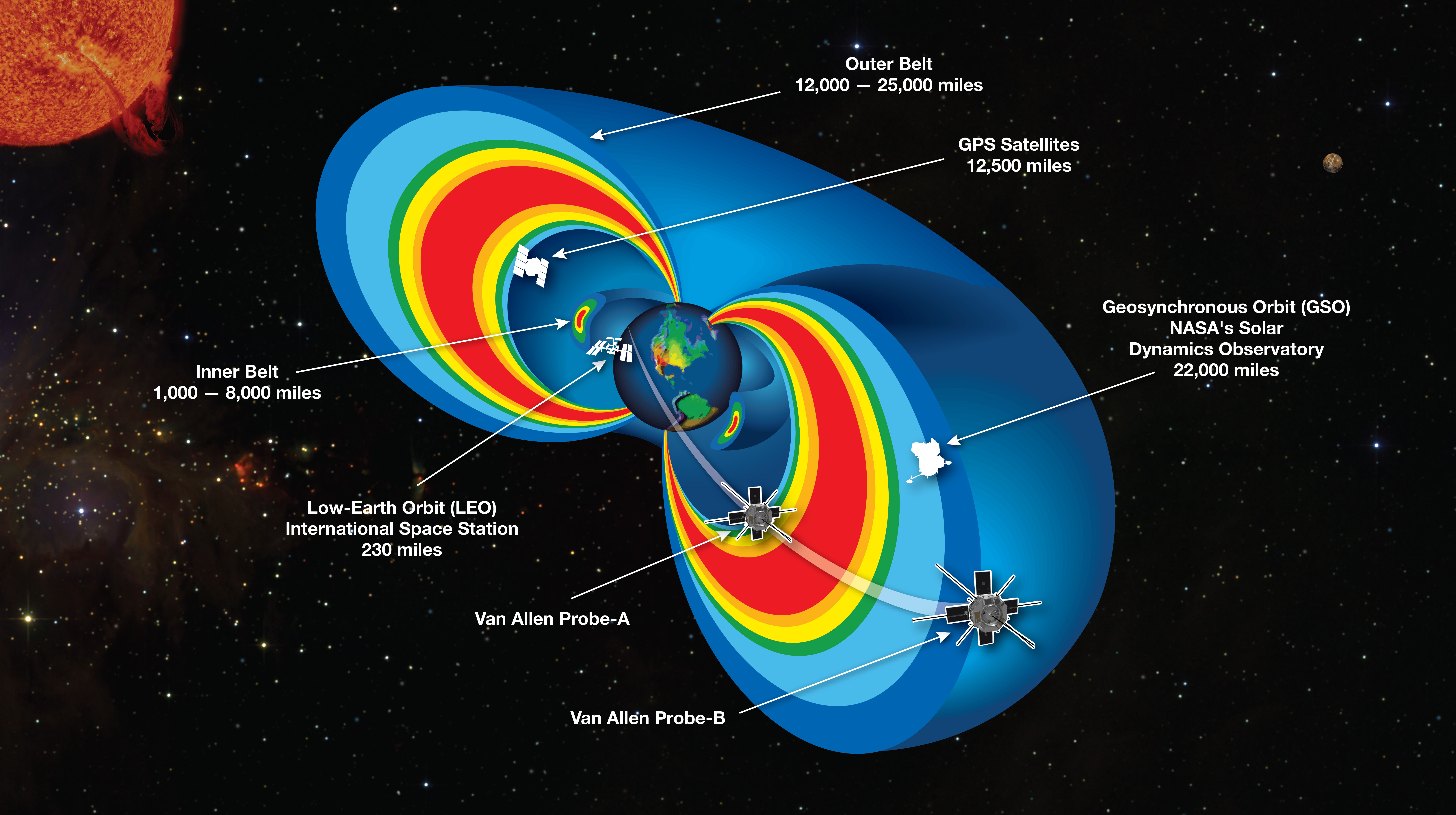
*Even to the most jaded, practical minded.
Asked recently on the Internet:
Why is the U.S spending so much money on NASA given that it is impractical and does not generate cash flow to sustain itself?
Because much of what NASA does isn’t immediately practical or capable of generating a self sustaining cash flow. Government has no business doing those things. Government should pay for things business can’t or won’t, like basic research.
NASA went to the moon because it was impossible, impractical, madness.
I’m on my way to Kansas to hear everyone say “when I was little, this was nothing but corn fields as far as you could see,” everywhere I go. But first, a bunch of us authors are Treking from WorldCon in Kansas City to Hutchinson to see the Cosmosphere, what I gather may be the best North American space museum outside the Smithsonian. Anyway, I’m eager to see Hutchinson; I grew up in the same small town in South Dakota.
Someone recently asked, “How can I convince my dad that Apollo 11 went to the moon?…He thinks later missions may have gone, but that Apollo 11 was faked just to meet Kennedy’s goal and beat the Reds”.
Simple. The Russians were watching. And listening.
The only way to convincingly fake a transmissions from the moon is to send transmissions from the moon. In addition to the high-capacity S-band transmitter in the CSM, the Apollo Command Module, Service Module, Lunar Module, and S-IVB upper stage each had their own independent omni-directional VHF transmitters which they used to communicate with each other and with ground stations and to support radio range finding.
Could the Soviets track these signals? You betcha.
- A Kentucky HAM radio operator named Larry Baysinger (W4EJA) did just that. On July 20, 1969, he listened in on 35 minutes of VHF chatter between Mike Collins (in orbit) and Neil and Buzz (on the surface), including the president’s “phone call,” all of which arrived in his headset about five seconds before it reached the TV inside the house. Baysinger used a home-brew chicken-wire 8×12 foot corner horn antenna he had built earlier for radio astronomy. This was sensitive enough that his buddy had to continually adjust his aim or the moon’s orbit would carry the transmissions out of focus. The Soviets and other national governments of course had far larger and more accurate antennas, and would have had no trouble telling the CSM in orbit from the landing site, or in decoding the S-band transmissions.
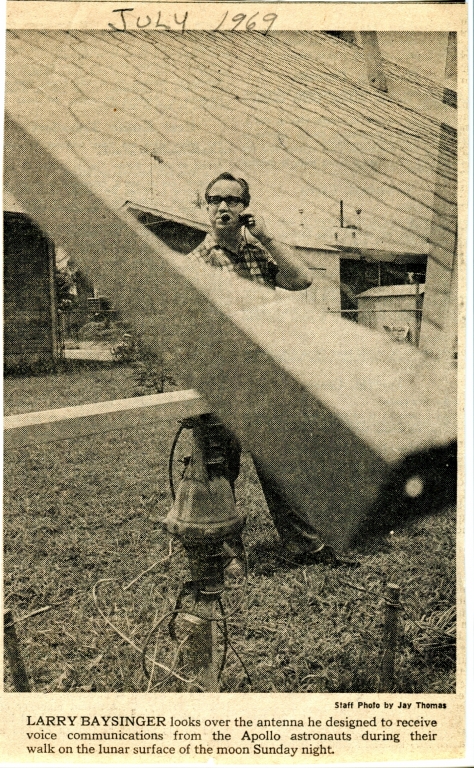
- Apollo 11 communications were independently recorded by the Bochum Observatory in West Germany using a 20 meter dish. The page, A Tribute to Honeysuckle Creek Tracking Station, has a link to the Bochum recording (heard in the right stereo channel only, with the Goldstone voice added in the left).
- A compilation of independent astronomical observations of the mission appeared in Sky and Telescope magazine, November 1969, pp. 358–359. These could not have been faked except by placing multiple alternate spacecraft in the announced positions at the announced times—which would rather defeat the purpose.
- Apollo 11 was tracked by the Madrid Apollo Station in Fresnedillas, Spain. Most of the personnel were not with NASA, but Spain’s Instituto Nacional de Técnica Aeroespacia. Were they all in on a conspiracy together? I think not.
- The Lick Observatory in San Jose not only tracked Apollo 11 and let throngs of journalists and well wishers see the spacecraft through their telescopes, they were standing by to use the new laser retro-reflector as soon as it was deployed.
- The Table Mountain Observatory in South Africa tracked Apollo 11 and published pictures in “Observations of Apollo 11”, Sky and Telescope, November 1969, pp. 358-359. Here is a 20 minute exposure from that article showing the spacecraft (as a streak) right where NASA said it should be:
- The Jodrell Bank Observatory in the UK tracked the mission in both optical and radio frequencies. Jodrell was tracking the Soviet Luna 15 probe at that time and knew when it had failed. They certainly would have known if Apollo 11 had not really landed.
All of which is to say, the moon landing could not have been faked. Not the first landing. Not the last. Not any of the in-between. Will hoax monkeys never learn? Yes Virginia, We Really Did Land On The Moon
Otter Creek – South Harrison Observatory
Apollo 11 anniversary: Lick Observatory scientists recall landmark experiment 40 years ago

